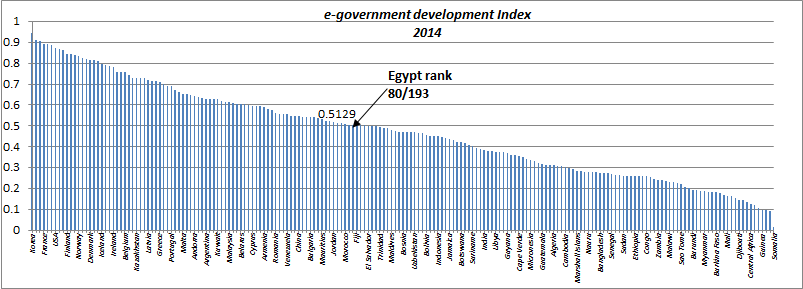The United Nations annually monitors, in detailed reports, the success rate of countries in achieving the requirements and conditions for the application of digital technology, and has developed indicators to measure the rates of this success by describing a number of goals that must be achieved by the application of digital technology. These goals are:
- Offer better service for citizens
- Establish transperancy and accountability
- Enables people and cetizens through information
- Improve effeciency of governement units
- Improve interactins between governemen unit and business men
- Facilitate interaction between government departments and institutions and various stakeholders
It is clear that achieving these goals requires an information structure in addition to devices and electronics. These objectives have been formulated in a general indicator for each country, known as the "e-Government Development Index (EGDI)", which is used to rank countries worldwide. The following chart gives the ranking of countries according to this indicator during 2014:

Ranking of nations in digital transformation implementation during 2014
(EGDI) reflects development of digital infrastructure in 4 key values as: